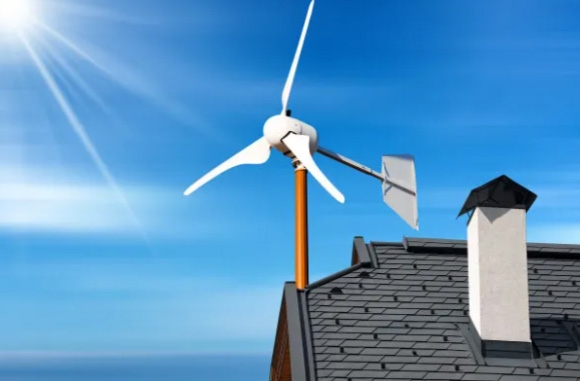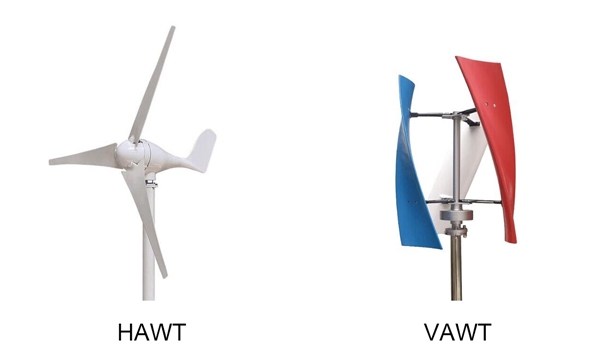A wind turbine is a device that converts the kinetic energy from the wind into mechanical energy, which can then be used to generate electricity. Wind turbines are a critical component of renewable energy systems and play a significant role in reducing dependence on fossil fuels and mitigating climate change. In this article, we will introduce wind turbine in detail.

Definition:
A wind turbine is a device that converts wind energy into mechanical energy and then converts mechanical energy into electrical energy. The basic principle is that the blade is rotated by the wind, which drives the generator to generate electricity. Wind power turbine is the core component of wind power system and plays an important role in the field of renewable energy.
How does wind turbine work?
Wind turbines operate on a simple principle: when wind flows over the blades, it creates lift, similar to the effect on airplane wings, causing the blades to turn. This turning action drives a generator, which converts the mechanical energy into electrical energy.
Wind energy capture: When wind blows through the blades of a turbine, the blades capture wind energy through aerodynamic design. The blades are usually designed as airfoils to maximize the kinetic energy of the wind.
Blade rotation: The wind drives the blades to rotate and the rotational motion of the blades is transmitted to the main shaft through the rotor. The design and angle of the blades affect the efficiency and performance of the wind turbine generator.
Mechanical energy transfer: The main shaft is connected to a speed booster, which converts the low-speed rotation of the blades into high-speed rotation for the efficient operation of the generator.
Power generation: A high-speed rotating spindle drives a generator, which converts mechanical energy into electrical energy. Typically, generators use the principle of electromagnetic induction to convert rotational motion into electrical current.
Electricity output: The generated electricity is transmitted via cable to the grid or to an energy storage device for power supply. Wind electric generators are usually equipped with a converter to ensure the quality and stability of the power output.
Types of wind power turbine:

- Horizontal-Axis Wind Turbine (HAWT). A horizontal axis wind turbine (HAWT) is a type of wind turbine where the main rotor shaft is aligned horizontally, parallel to the ground. This configuration allows the rotor blades to face into the wind, capturing its kinetic energy efficiently. HAWTs typically have three blades and are mounted on a tall tower to take advantage of higher wind speeds at greater heights. The rotor spins a generator to produce electricity. Horizontal axis wind turbines are the most common type of wind turbines used in both onshore and offshore wind farms due to their high efficiency and well-established technology. They play a significant role in renewable energy generation, contributing to the reduction of greenhouse gas emissions.
- Vertical-Axis Wind Turbines (VAWT). A vertical axis wind turbine (VAWT) is a type of wind turbine where the main rotor shaft is set vertically, as opposed to the more common horizontal axis wind turbine (HAWT). This design allows the turbine to capture wind from any direction, making it more versatile in varying wind conditions. Vertical axis wind turbines are typically closer to the ground, which simplifies maintenance and reduces installation costs. However, they generally have lower efficiency compared to HAWTs and can experience more stress on their components due to varying wind forces. VAWTs are used in both small-scale residential applications and larger urban environments where turbulent winds prevail.
Wind turbine advantage:
As a clean energy technology, wind turbine has many advantages:
- Renewable. Wind energy is a renewable resource and will not run out. As long as there is wind, electricity can be generated.
- Environmentally friendly. Wind power does not produce greenhouse gases and other pollutants, helping to reduce air pollution and climate change.
- Economics. With the advancement of technology and large-scale production, the cost of wind mill turbine has gradually decreased, becoming an economically viable energy option.
- Energy independence. Using wind power can reduce dependence on fossil fuels and improve energy security.
- Low maintenance costs. Modern wind turbine generators are designed to be durable, have relatively low operating and maintenance costs, and typically last around 5-10 years.
Wind electric turbines are a vital part of the transition to a sustainable energy future. They harness the power of the wind to generate clean electricity, contributing to environmental protection, energy independence, and economic growth. Despite challenges such as intermittency and environmental impacts, ongoing technological advancements and strategic planning are paving the way for a bright future for wind energy. A variety of wind power turbines can be chosen in Inverter Online Shop. As the world continues to embrace renewable energy, wind turbines will play an increasingly important role in powering our lives and protecting our planet.
